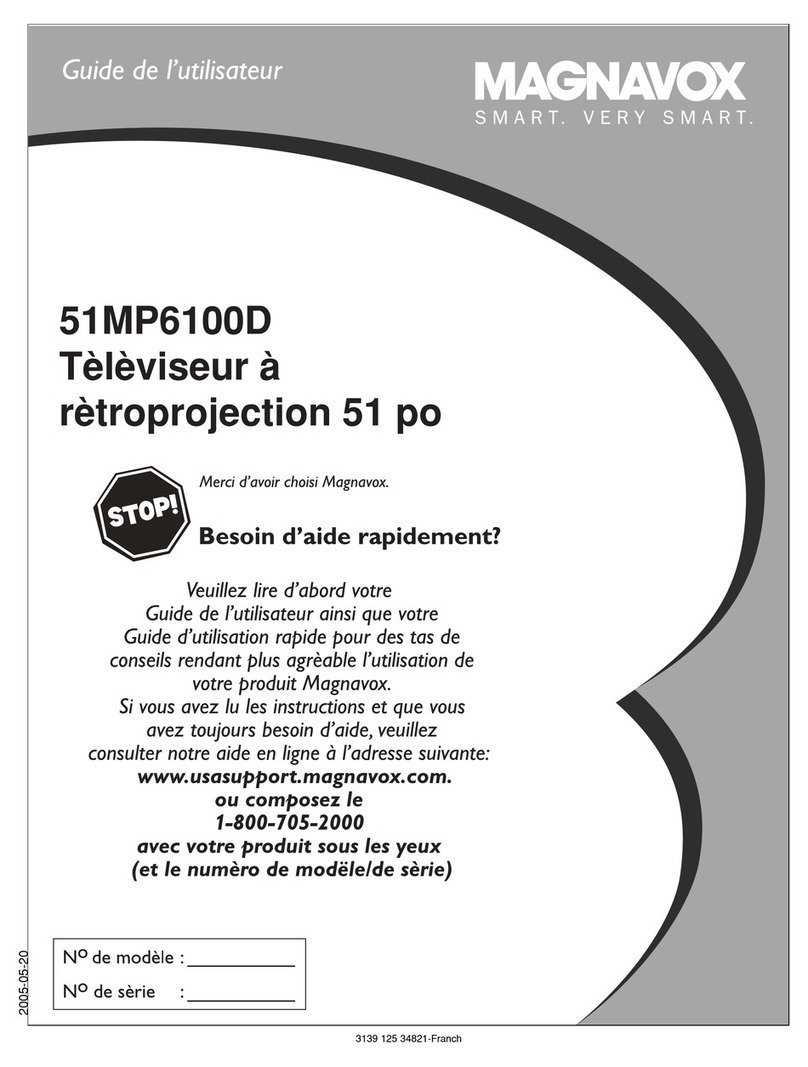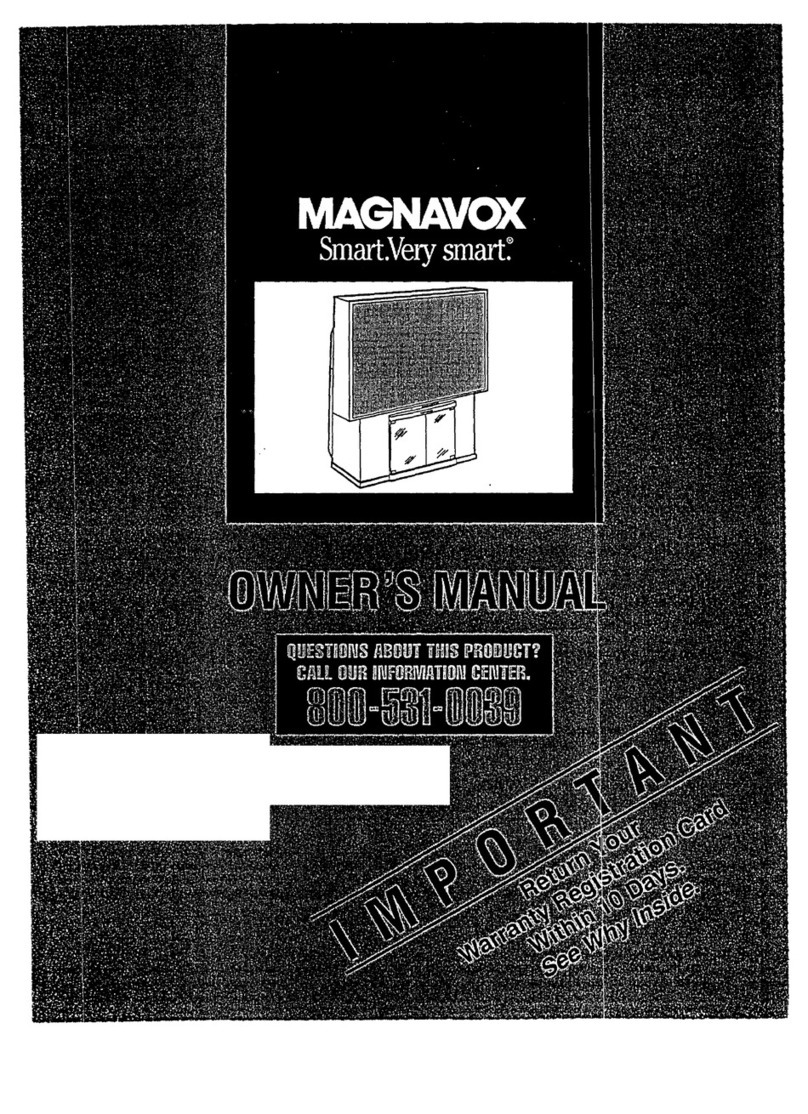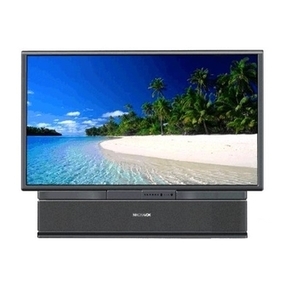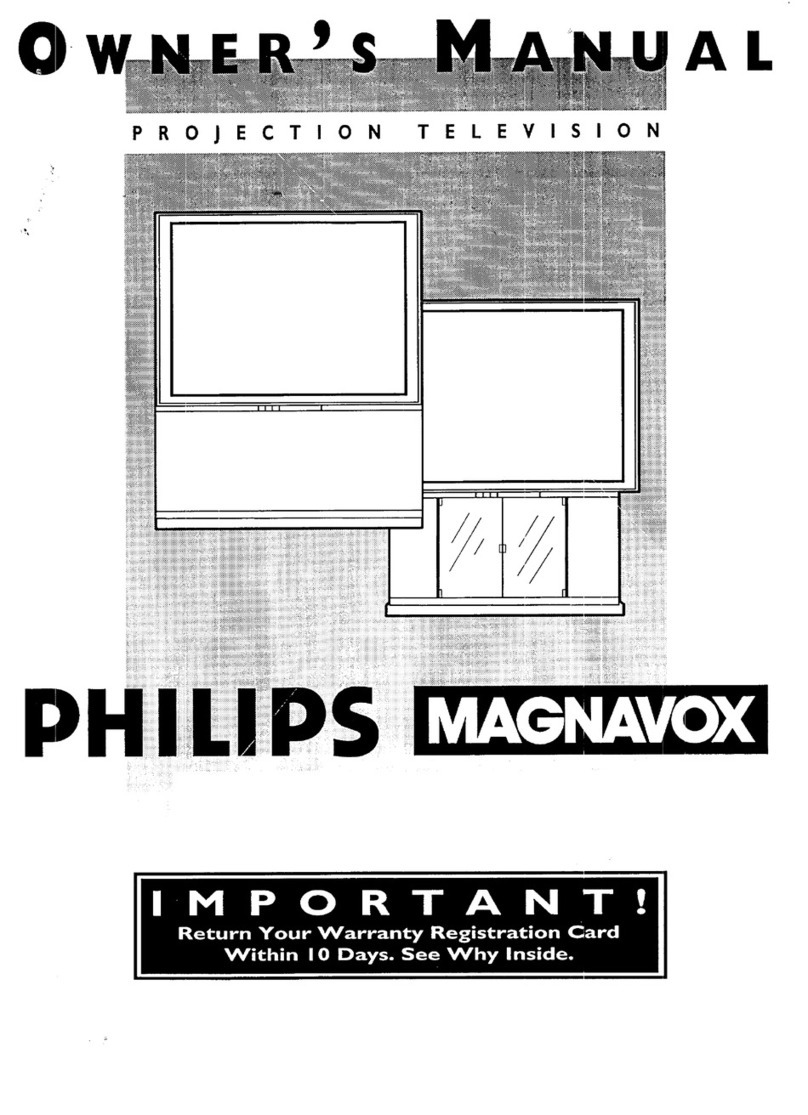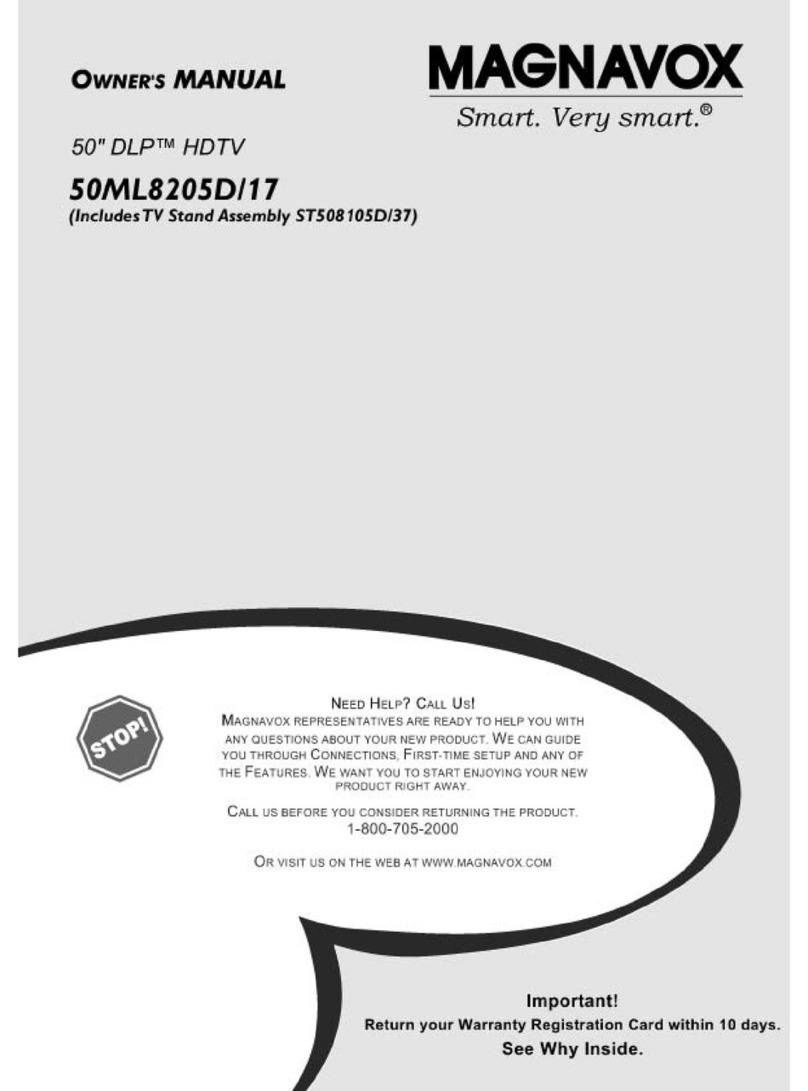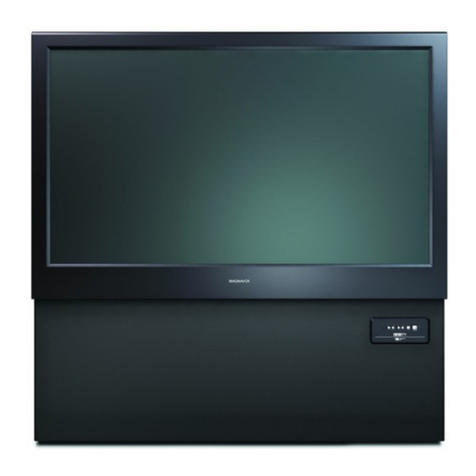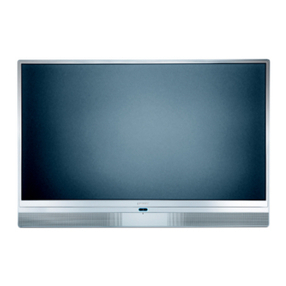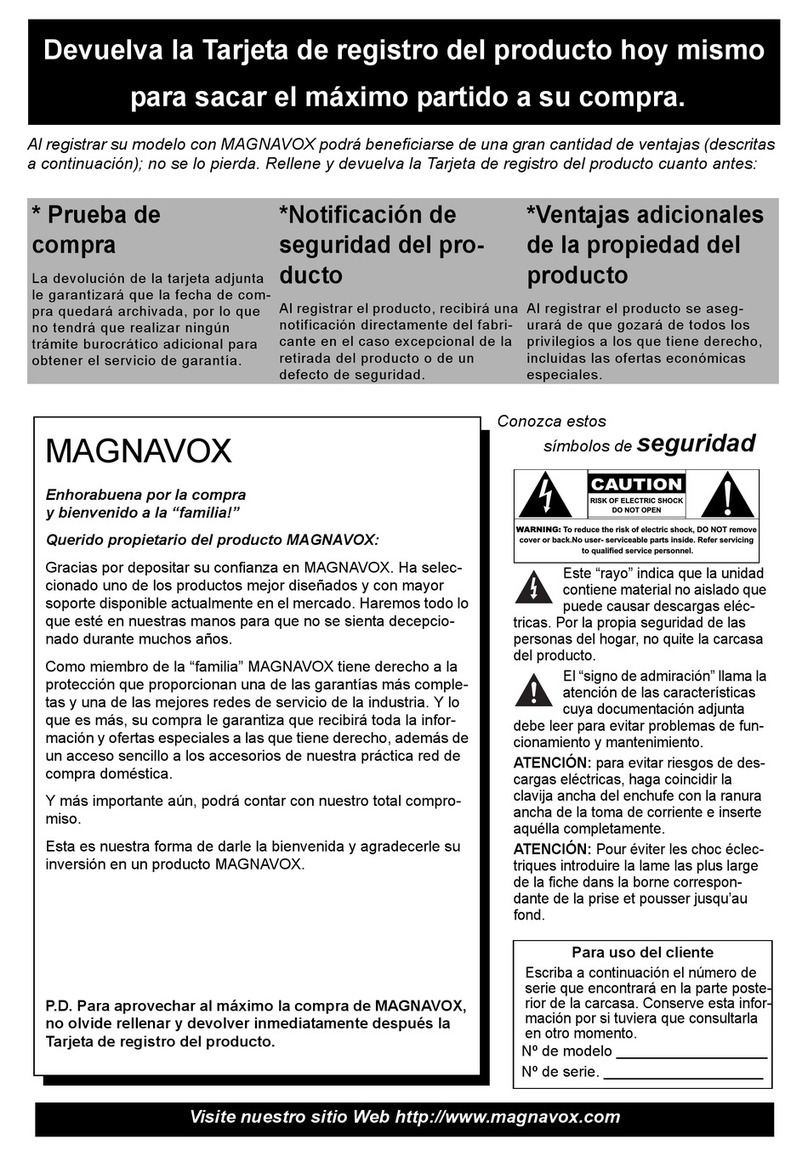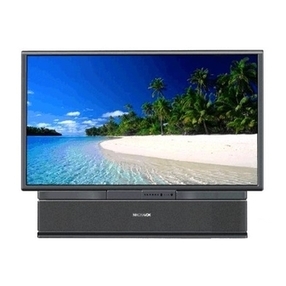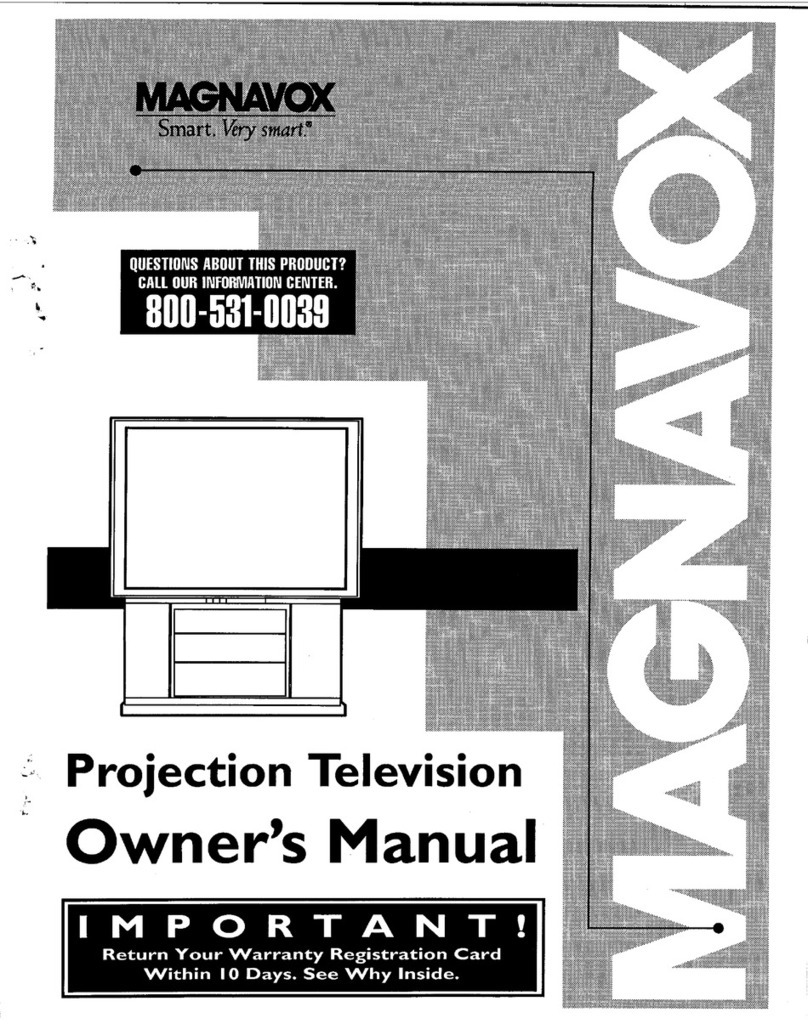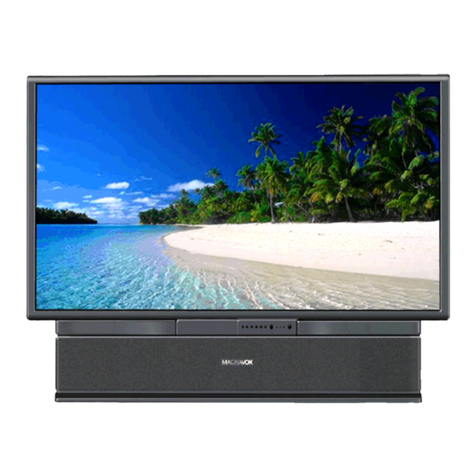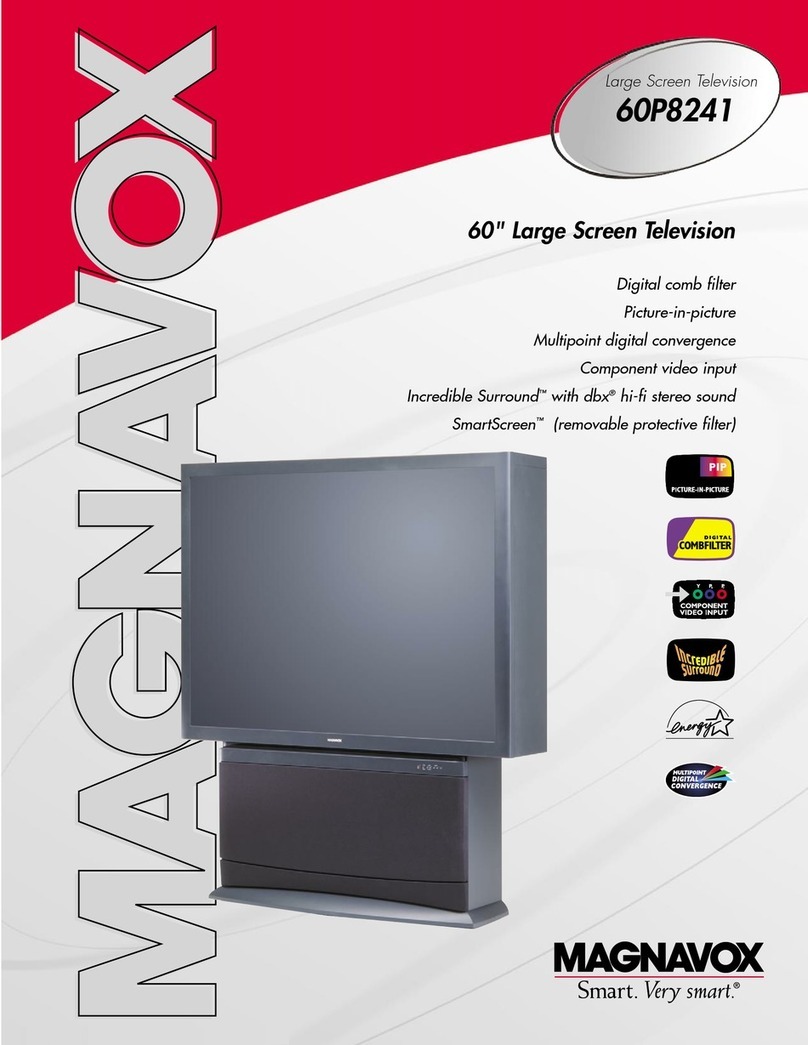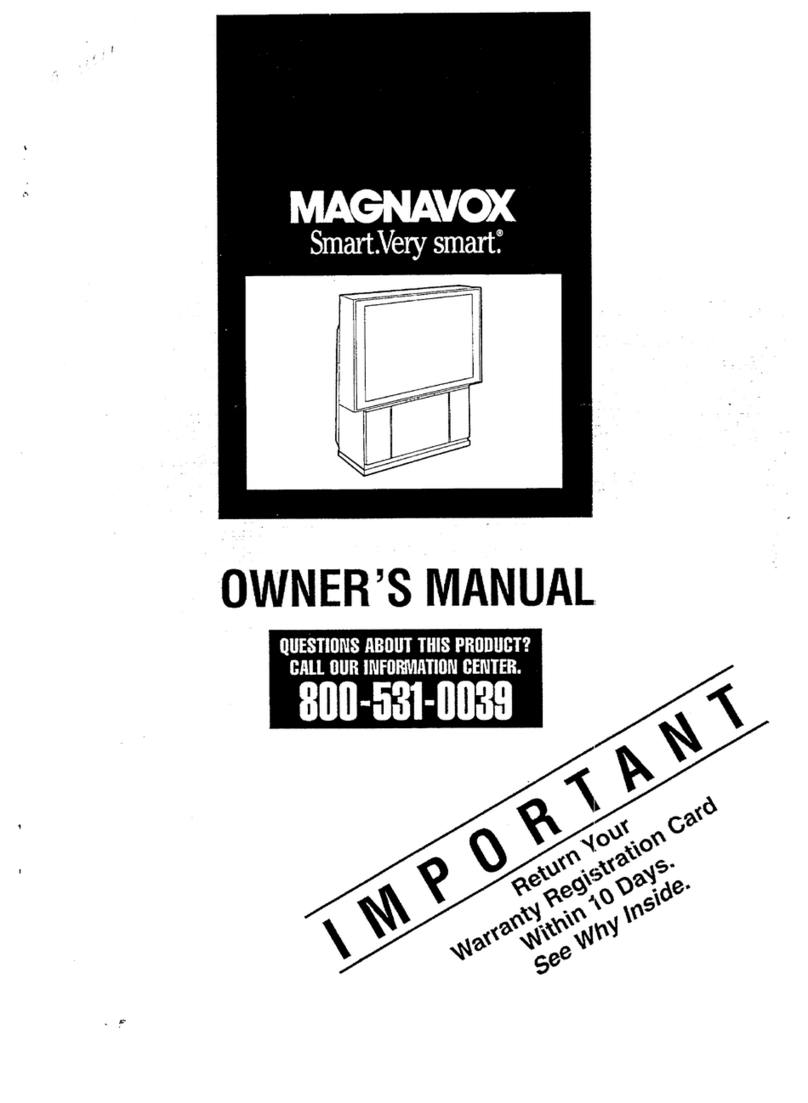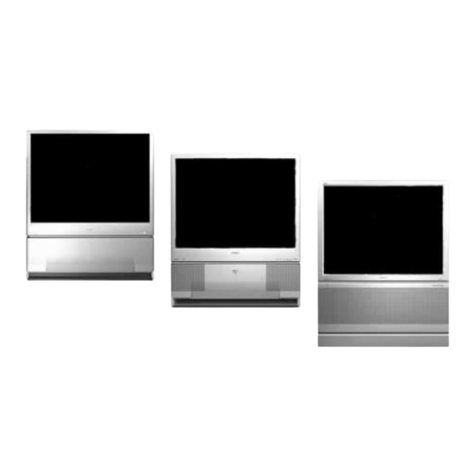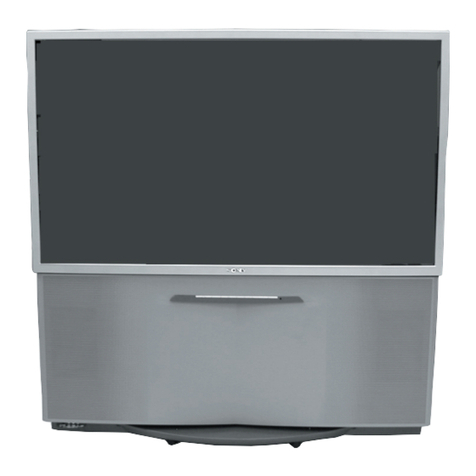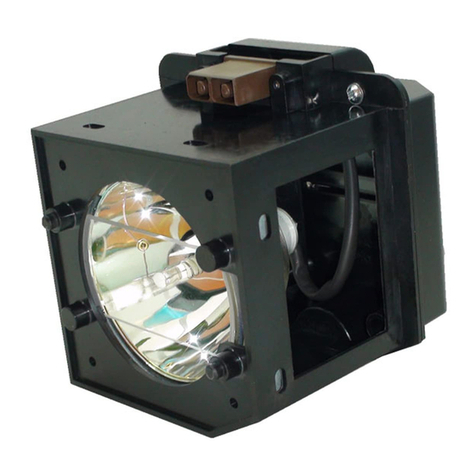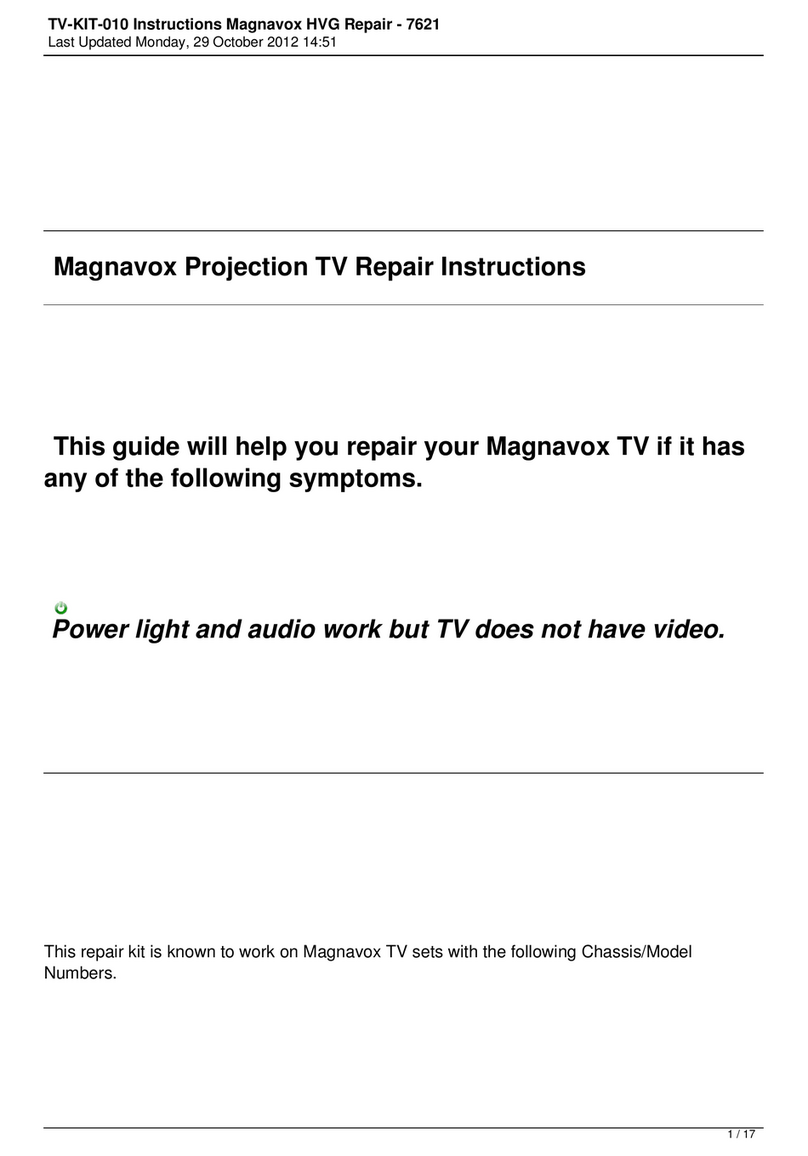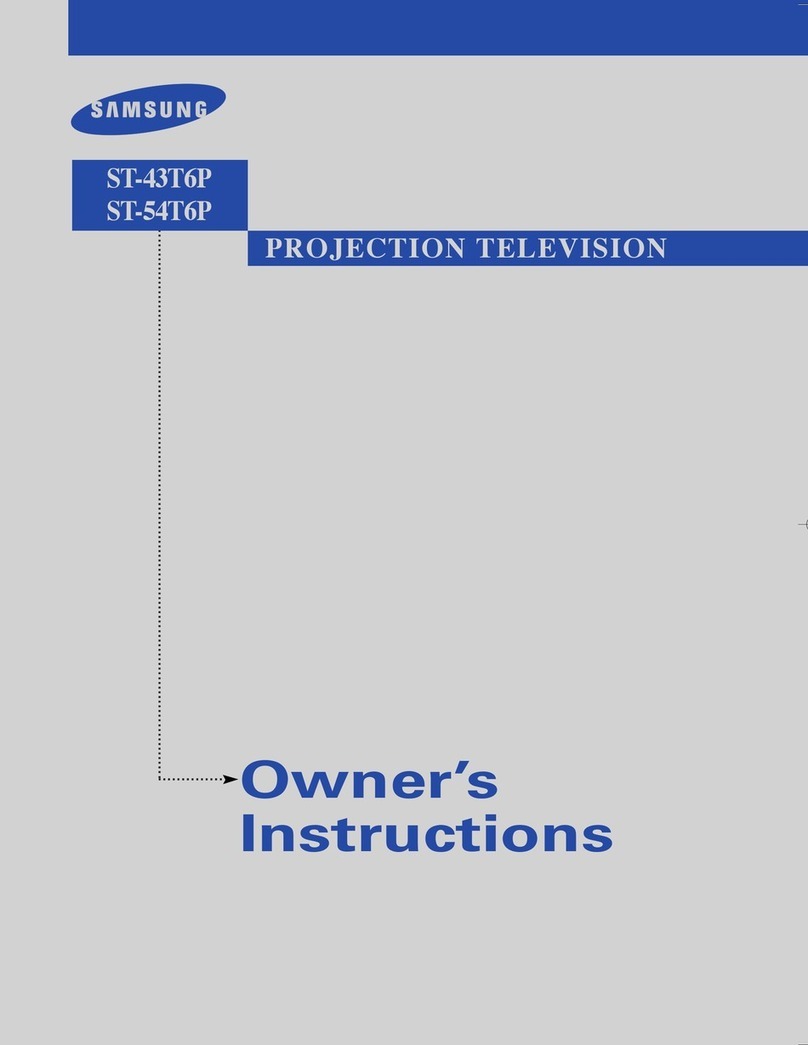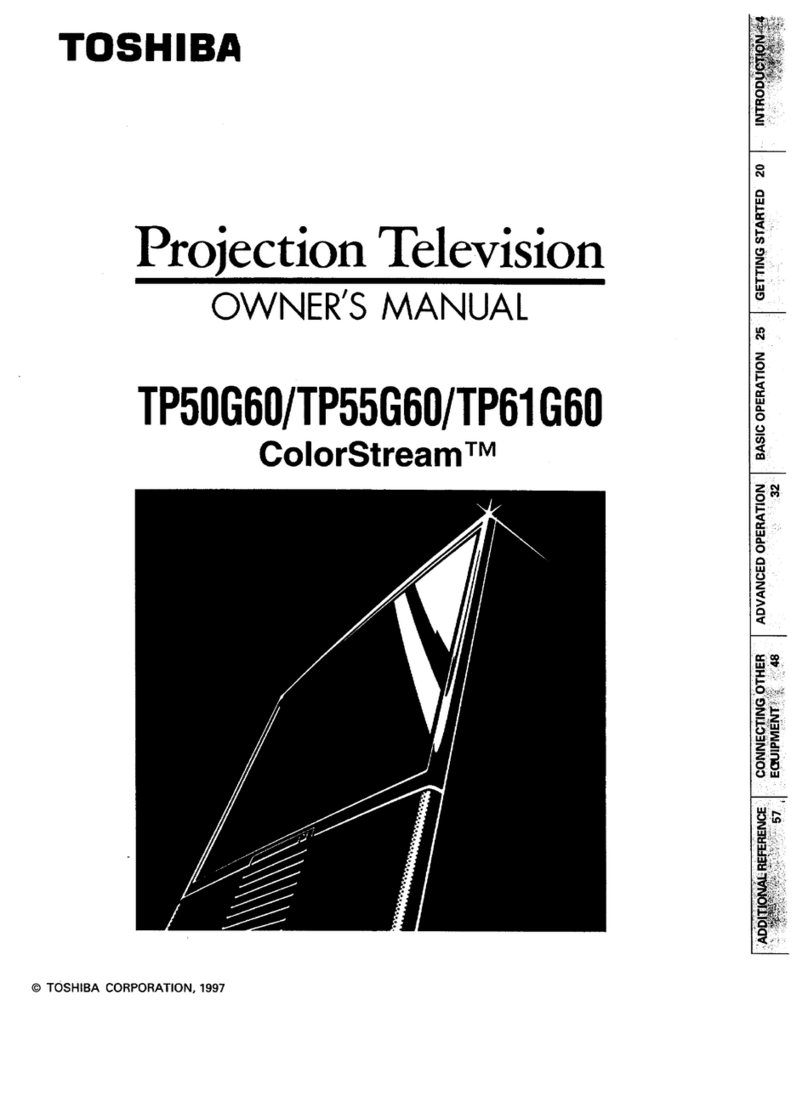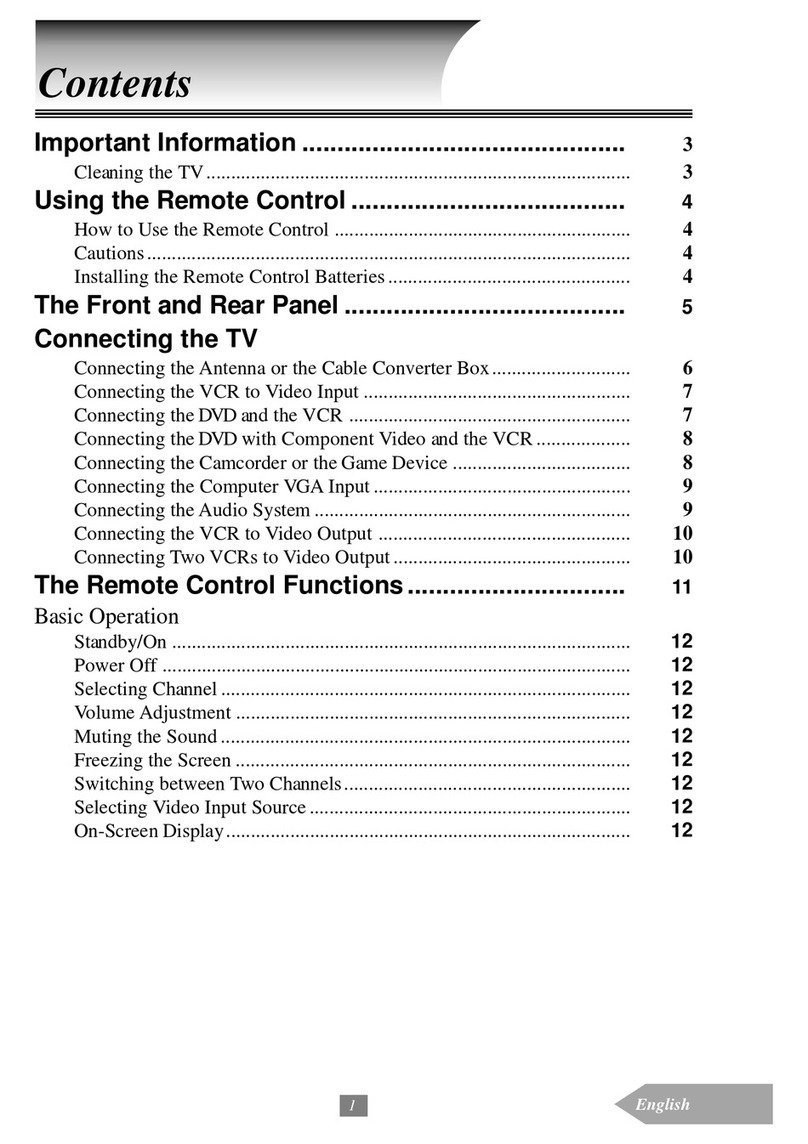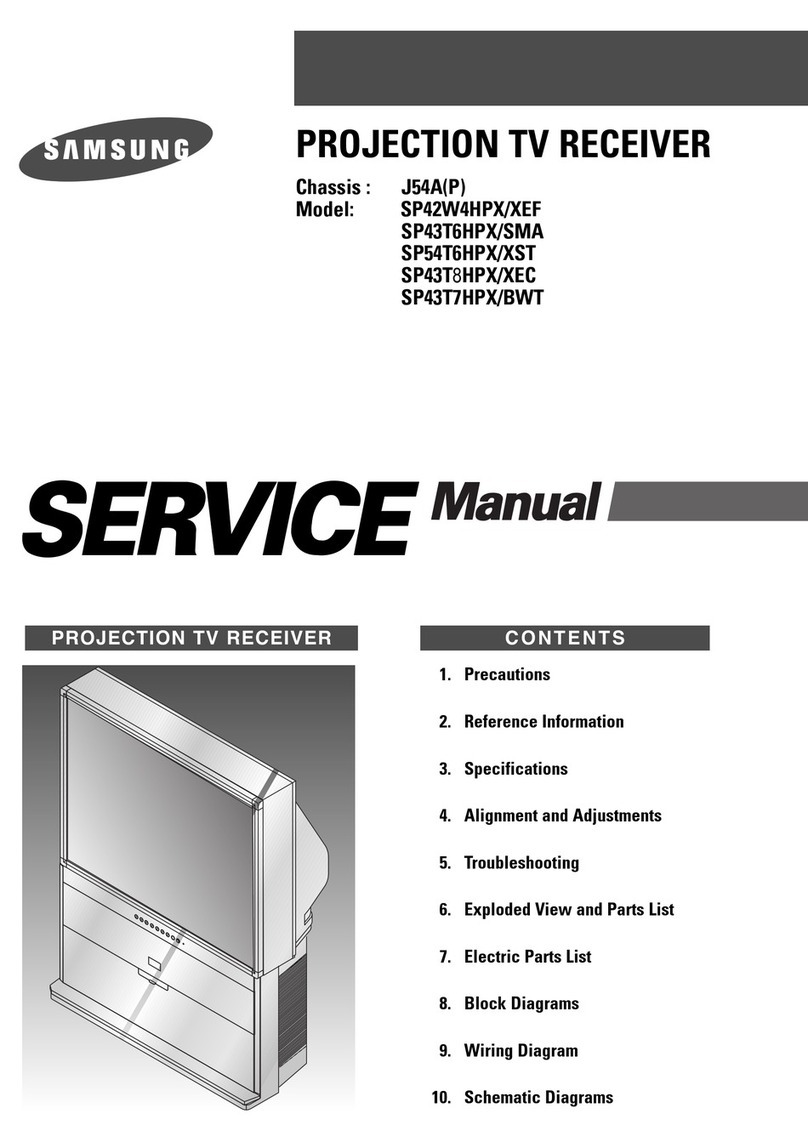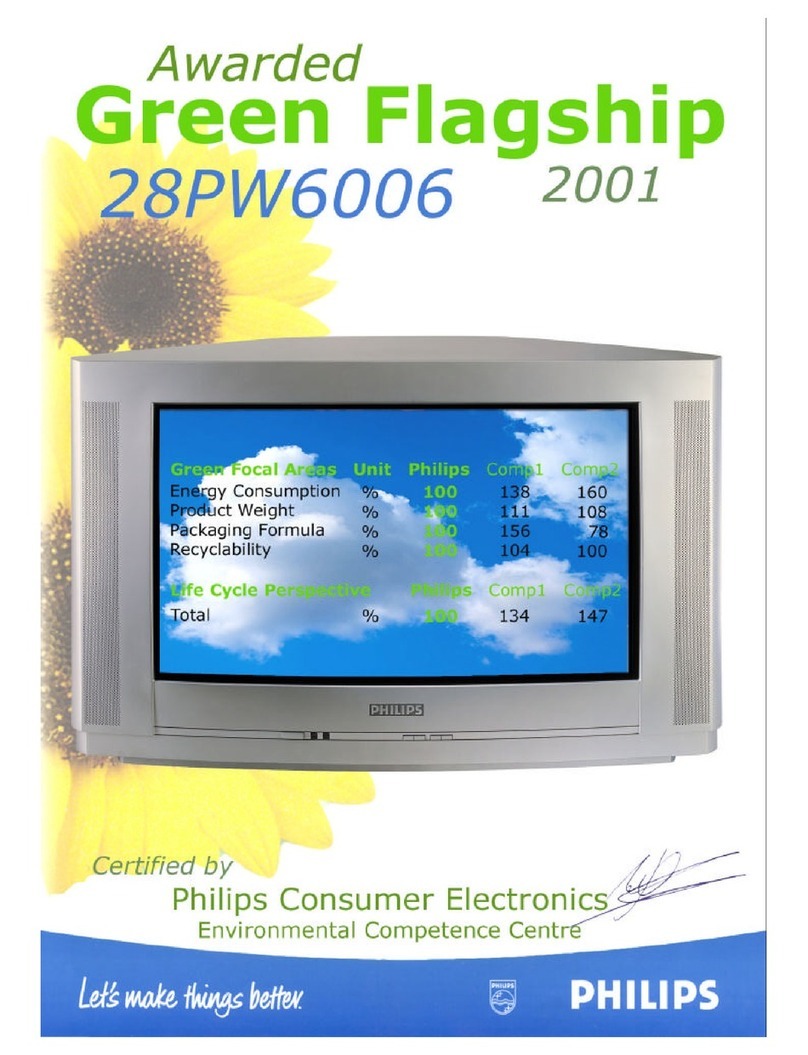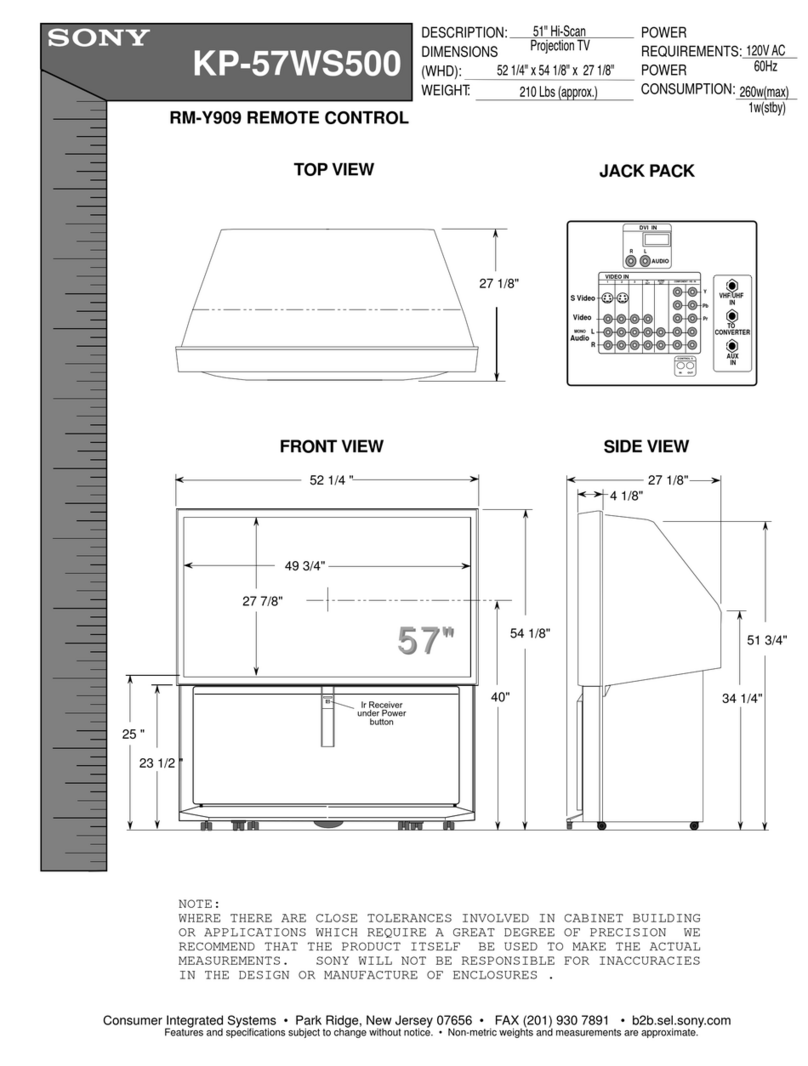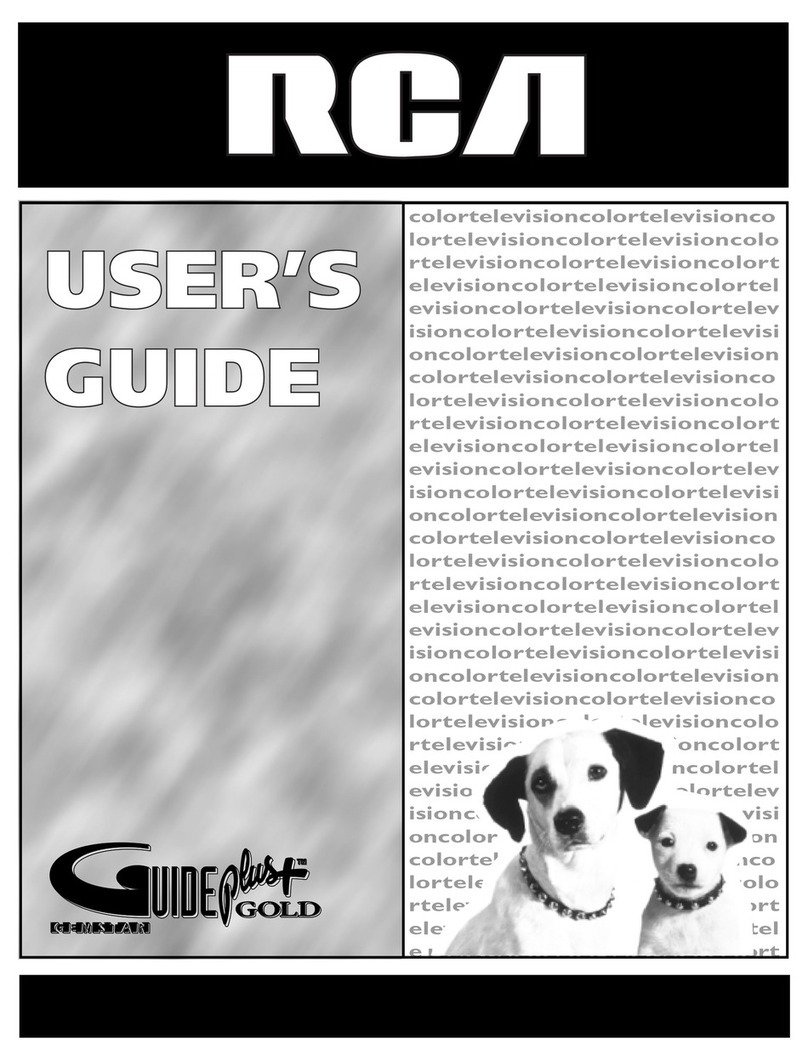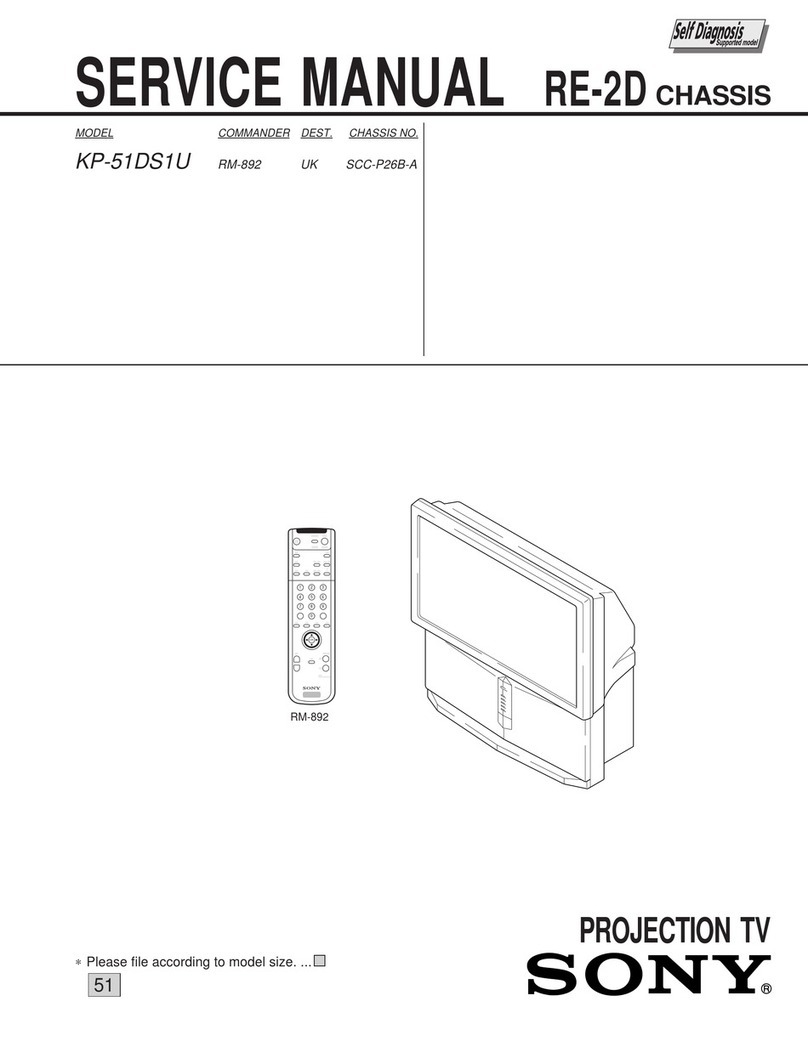SAFETYINSTRUCTIONS- Readbefore operatingequipment
This productwasdesignedand manufacturedto meetstrict qualityand
safeS/standards.Thereare,however,someinstallationand operation
precautionswhichyoushouldbeparticularlyawareof.
1. Read Instructions- All the safetyand operating instructions should
be read before the appliance is operated.
2. Retain Instructions - The safety and operating instructions should
be retainedfor future reference.
3. Heed Warnings- All warnings on the applianc_and inthe operating
instructions should be adheredto.
4. Follow Instructions - All operating and use instructions should be
followed.
5. Water and Moisture - Theappliance should not be used near water
- for example,near a bathtub, washbowl, kitchen sink, laundry tub,
in a wet basement or neara swimming pool, etc.
6. Cartsand Stands - The applianceshould beused only with acart or
standthat is recommended by the manufacturer.
6A. _ An appliance and cart combination should be moved
with care. Quick stops, excessive force, and uneven
surfaces may causethe appliance and cart combination
to overturn.
7. Wall or Ceiling Mounting - The appliance should be mounted to a
wall or ceiling only as recommended bythe manufacturer.
8. Ventilation - The appliance should be situated so that its location or
position does not interfere with its proper ventilation. For example,
the appliance should not be situated on a bed, sofa, rug, or similar
surface that may block the ventilation openings; or, placed in a
built-in installation, such as a bookcaseor cabinetthat may impede
the flow of air through the ventilation openings.
9. Heat - The appliance should be situated away from hear sources
such as radiators, heat registers, stoves, or other appliances
(including amplifiers) that produceheat.
10. Power Sources - The appliance should be connected to a power
supply only of the type described in the operating instructions or as
marked on the appliance.
11. Power-Cord Protection - Power supply cords should be routed so
that they are not likely to be walked on or pinched by items placed
upon or against them, paying particular attention to cords and
plugs, convenience receptacles, and the point where they exit from
the appliance.
12. Cleaning- The appliance should be cleanedonly as recommended
bythe manufacturer.
13. Power Lines - An outdoor antenna should be located away from
power lines.
14. OutdoorAntennaGrounding-If an outside antenna is connectedto
the receiver, be sure the antenna system is grounded so as to
provide some protection against voltage surges and built up static
charges.
Section 810 of the National ElectricCode,ANSI/NFPANo.70-1984,
provides information with respect to proper grounding of the mats
and supporting structure grounding of the lead-in wire to an
antenna discharge unit, size of !)rounding connector.';, location of
antenna-discharge unit, connect:ion to grounding electrodes and
requirementsfor the grounding electrode. SeeFig. below.
15. Non-use Periods - The power cord of the appliance should be
unplugged from the outlet whet left unused for a long period of
time.
16. Objectand LiquidEntry- Careshould betaken so that objects do
not fall and liquids are not spilled into the enclosure through
openings.
17. Damage Requiring Service - The._ appliance should be serviced by
qualified servicepersonnelwhen:
A. The powersupply cord or the plug hasbeendamaged;or
B. Objects have fallen, or liquid has been spil]led into the
appliance;or
C. Theappliance hasbeenexposed to rain; or
D. The appliance does not appearto operate normalllyor exhibits
a markedchangein performance; or
E. Theappliance hasbeendropped, or the enclosuredamaged.
18. Servicing - The user should not attempt to service the appliance
beyond that described in the operating instructions. All other
servicing should be referredto qualified service personnel.
Note to the CATVsysteminstaller: This reminder is provided to call the
CATV system installer's attention to Article 820-40 of the NEC that
provides guidelinesfor proper grounding and, in particular, specifiesthat
the cable ground shall be connecled to the grounding system of the
building, ascloseto the point of cableentry as practical.
EXAMPLE OF ANTENNA GROUNDING AS PER NATIONAL ELECTRICAL CODE (NEC)
ExampleofAntennaGrounding
as per NEC- National Electric Code
ANTENNALEADINWIRE
J
ELECTRICSERVICEEQUIPMENT
ANTENNADISCHARGEUNIT(NECSECTION810-20)
GROUNDINGCONDUCTORS{MEC SECTION 810-21)
GROUNDCLAMPS
POWERSERVICEGROUNDINGELECTRODESYSTEM(NECART2!_,PARTH)
MAC3964
